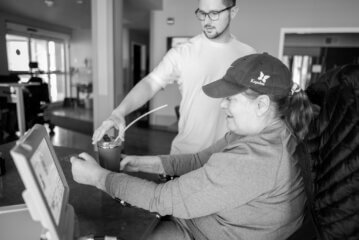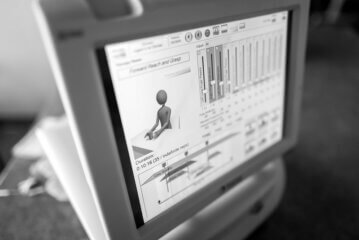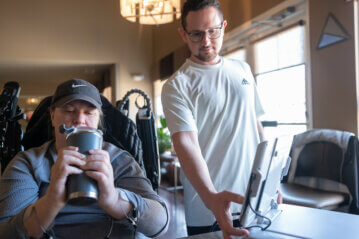Functional therapy is at the bedrock of recovery from injury. An extension of what can be done in a therapy gym, the functional side asks whether these skills are indeed applicable in a community or “real-world” setting. It is one thing to hone one’s arm and hand strength, yet it is another to see if those skills
A client’s program with Xcite begins with identifying major goals about activities of daily living (ADLs). “For some of our clients,” says Sara, “they want to return to using their hands functionally, whether that be cooking for the family, feeding themselves, or managing toileting needs. We can assess where clients are at with those routines and skills and then introduce the Xcite, which can bridge the gap and put them on the road towards learning the skills they need to accomplish those tasks independently.”
It isn’t just a firing of electrodes—the Xcite has preset and designed patterns that a user can implement and follow, while elements such as the speed of the chimes and firing can be controlled (though it must be changed as a whole and not simply in part). Additionally, various levels of the Xcite’s firing and support can also be controlled. For example, a seated individual wanting to practice grabbing a cup of water and bringing it to their mouth might first have a chime that fires muscles in the hand, opening the
The technology still presents some inherent barriers, such as the structure of preset eating patterns. An individual may not complete forking their food, and as they’re trying again the Xcite will move on to the next phase of the exercise (bringing the fork to the mouth). Ideally, the Xcite devices will find a place in every QLI campus home with direct care team members trained, but the barrier to entry and the learning curve is significant. Fortunately, the process is evolving, and clinicians are committed to this future ideal.
Not only are clients’ goals actively worked towards in these sessions, but they also provide a clearer picture for the clients. “The correlation between what we work on formally and what someone can do functionally is apparent to our clients,” notes Sara. “For one client I’ve worked with, she can see the 
Get more information on QLI’s spinal cord injury programs.
Categories: Functional Rehab, Neuroscience, Skill Acquisition, Spinal Cord Injury, Stroke
